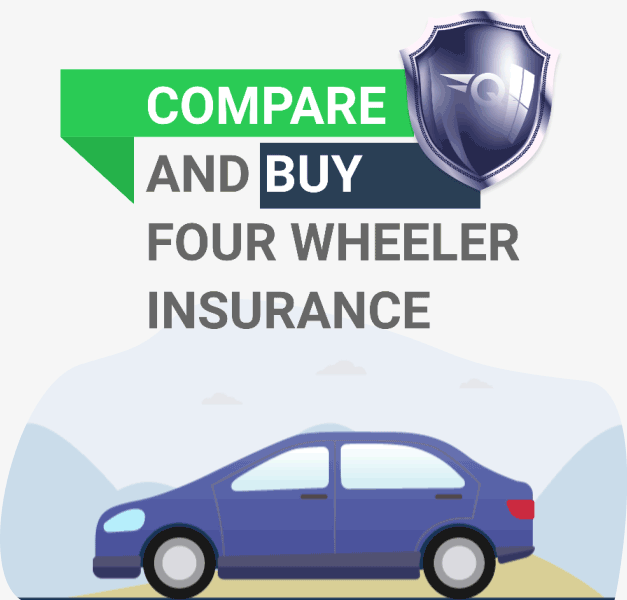
Continue with
Registration Number
Continue without
Registration Number
I Have
Brand new Car
Usually, May-June and October-November are the peak seasons for natural disasters like the destruction of houses, buildings, transportation systems, electricity, and the death of livestock. Cyclones primarily cause damage to homes and result in loss of life and property. Vehicles, mainly cars, can be easily drifted off the surface by a cyclone’s speed, suffering significant damage.
If your car is damaged due to a cyclone, you need to understand how to claim cyclone insurance or insurance for natural disasters, as well as the vehicle insurance claim process.

What is Cyclone Insurance?
Cyclone insurance is a type of insurance coverage that provides financial protection against damages caused by cyclones, also known as hurricanes or typhoons in different regions. It typically covers damages to property, including homes, buildings, vehicles, and personal belongings, as well as expenses related to temporary relocation and debris removal. Cyclone insurance helps individuals and businesses recover from the devastating effects of these powerful tropical storms by providing compensation for repair or replacement costs incurred due to cyclone-related damages.
What is Vehicle Damage Insurance?
Vehicle damage insurance, which is a part of comprehensive auto insurance policies, provides coverage for damages to your vehicle resulting from various incidents. It safeguards against expenses incurred due to collisions, theft, vandalism, natural disasters like cyclones, and other unforeseen events. This insurance ensures financial protection by covering repair or replacement costs, offering peace of mind for vehicle owners. You can follow these steps to check your car insurance policy status online with complete details.
Inclusions of Cyclone Insurance
Exclusions of Cyclone Insurance
How to Claim Car Damage Due to Cyclone?
Ensure that you and your family are safe. Only when it is safe to do so, assess the damage to your car.
Take clear, detailed photos and videos of the damage to your car from various angles. This includes both external and internal damage. Note the date and time of the cyclone and the damage.
Check your insurance policy to confirm that it covers natural disasters or cyclones under comprehensive coverage. Understand your policy limits, deductibles, and the claims process.
Contact your car insurance provider soon to report the car damage and its situation. Most insurers have a 24/7 claims hotline or an online portal. Provide them with all necessary details, including the date, time, and nature of the cyclone, as well as the extent of the damage.
Fill out the claim form provided by your insurer. This may be available online or through a mobile app. Attach all required documentation, including photos, videos, and any other evidence of the damage.
An insurance adjuster may be sent to assess the damage to your car. Ensure the vehicle is available for inspection. Cooperate with the adjuster and provide any additional information they may need.
Obtain repair estimates from authorized servicing shops or garages. Submit these estimates to your insurance provider for approval.
Once the claim is approved, your insurer will provide instructions on how to proceed with repairs. Take your car to an authorized repair shop, if specified by your insurer, to ensure the repairs are covered.
Depending on the policy you have purchased, the insurer will pay the servicing center directly or reimburse you after you’ve paid for the repairs. Ensure you keep all receipts and invoices related to the repairs.
Follow up with your insurance provider if there are any delays or issues with your claim. Keep a record of all communications with your insurer for future reference.
Important Tips for Cyclone Damage and Car Insurance Claims
Before claiming insurance, read your policy carefully. Check what it covers and the terms and conditions.
Report your insurance company on your car damage as soon as possible. This will help you speed up the process claim.
If your car is damaged by a cyclone, don't try to start it. This could make things worse and might not be covered by your insurance.
Before getting repairs, ask your car insurance company to assess the damage. Repairing the car before this assessment might lead to your claim being rejected.
FAQs
Q1. Can I take my car for repairs at a network garage without informing the insurer?
Ans: It's best to inform your insurer before taking your car for repairs at a network garage. Not doing so might affect your claim process or coverage eligibility.
Q2. Do I have to purchase an additional add-on to get coverage for cyclones in my insurance policy?
Ans: Yes, you may need to purchase a separate add-on or comprehensive insurance policy that includes coverage for cyclones. Standard insurance policies may not automatically cover such natural disasters.
Q3. Can I switch my insurance provider in the middle of my policy term if I find a better deal elsewhere?
Ans: Yes, you can switch your vehicle insurance provider in the middle of your policy term if you find a better deal elsewhere. However, it's essential to consider factors such as any penalties for early termination, coverage benefits, and the reputation of the new insurer before making a decision. It's advisable to compare quotes and policies carefully to ensure you're getting the best coverage for your needs.
Last Modified : 22 -September -2024